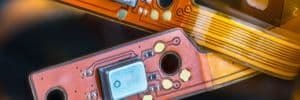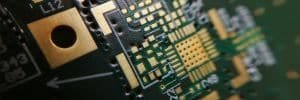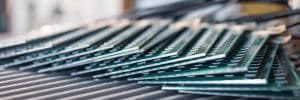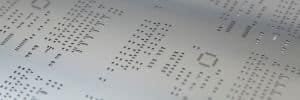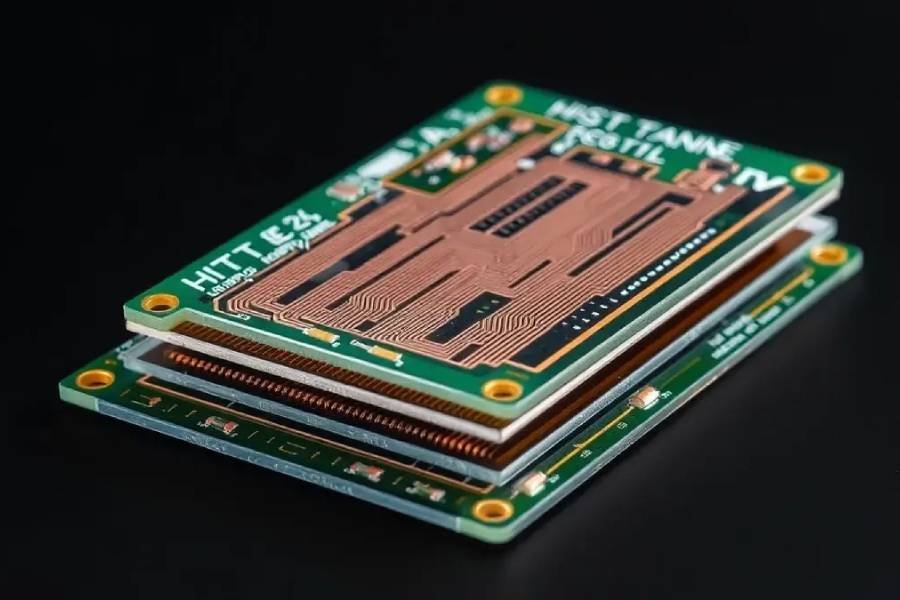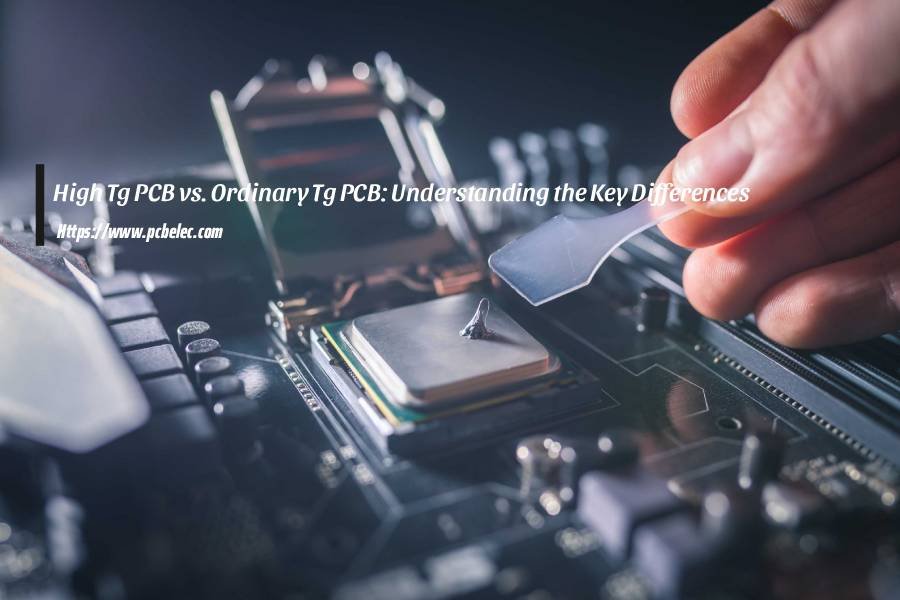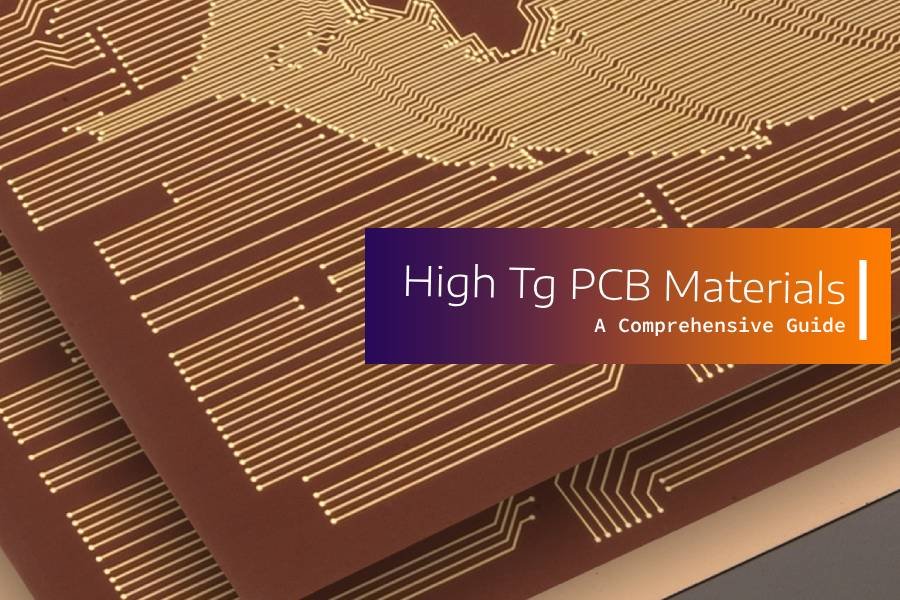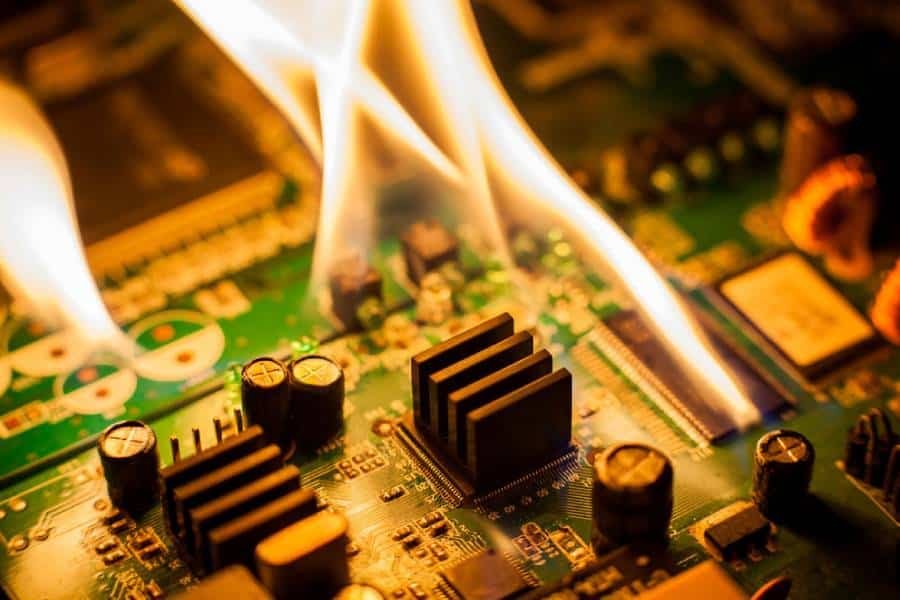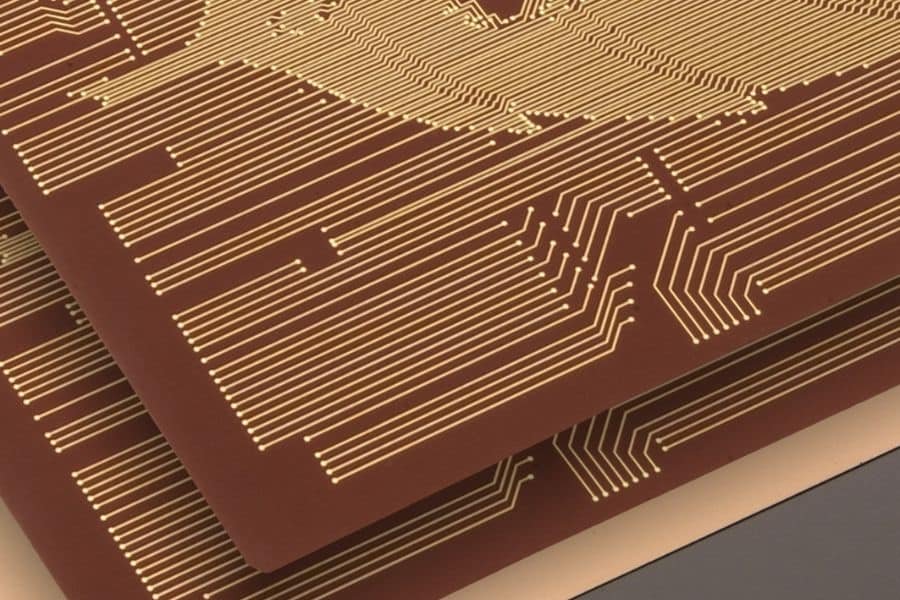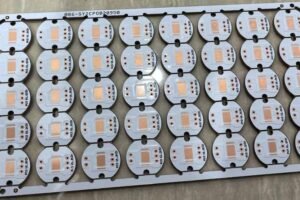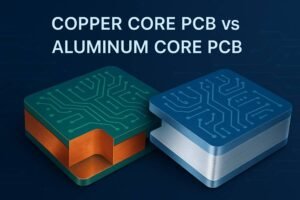Table of Contents
Why High Tg PCBs Matter in Today’s Electronics
Imagine an electric vehicle speeding down the highway, its battery management system working overtime to keep everything running smoothly. Now picture the circuit board inside that system—exposed to intense heat from the engine and electronics. One small failure in that PCB could spell disaster, from a stalled car to costly repairs. This is where High Tg PCBs step in, designed to withstand extreme temperatures and keep critical systems reliable. At JHYPCB, we’ve seen firsthand how these specialized circuit boards make the difference in demanding applications, and we’re excited to share what makes them so essential.
So, what is a High Tg PCB? In simple terms, it’s a printed circuit board made with materials that have a high glass transition temperature (Tg)—the point where the board’s material starts to soften under heat. Unlike standard PCBs, High Tg PCBs (typically with a Tg of 170°C or higher) are built to endure harsh thermal environments without losing their structural integrity. Whether it’s powering automotive controls, aerospace avionics, or high-power LED lights, these boards are the backbone of modern electronics where reliability can’t be compromised.
Why does this matter today? As industries push for smaller, denser, and more powerful devices, operating temperatures are climbing. From 5G infrastructure to renewable energy systems, the demand for high temperature PCB solutions is growing fast. In this article, we’ll break down the definition of High Tg PCBs, explore their key advantages like enhanced thermal stability and durability, and dive into their real-world uses across industries. Drawing on our expertise as a leading China-based PCB manufacturer, JHYPCB is here to guide you through why High Tg PCBs are a game-changer—and how we can help bring your high-performance projects to life. Ready to learn more? Let’s get started.
Curious about the specifics of High Tg materials? Check out our in-depth guide, High Tg PCB Materials: A Comprehensive Guide to High-Temperature Performance and Applications, or contact us for a free consultation on your next project.

Understanding Tg: The Core of High Tg PCB Materials
When it comes to High Tg PCBs, the term “Tg” is the key to unlocking their superpower: resilience under heat. But what exactly is Tg, and why does it matter so much for your circuit boards? At JHYPCB, we’ve been crafting high-performance PCBs for years, and we know that understanding the glass transition temperature (Tg) is the first step to appreciating why High Tg PCBs are a must for demanding applications. Let’s break it down in a way that’s clear, practical, and grounded in our real-world experience.
What is Tg in PCBs?
Tg, or glass transition temperature, is the temperature at which a PCB’s base material—typically a laminate like FR4—starts to shift from a rigid, glassy state to a softer, more flexible one. Think of it like a frozen lake starting to thaw: below the Tg, the material is solid and stable; above it, it begins to lose its structural integrity. For standard PCBs, the Tg is often around 130-140°C, which works fine for many everyday electronics. But in high-heat environments—like an automotive engine control unit or a telecommunications base station—that’s often not enough.
High Tg PCBs, by contrast, use advanced materials with a Tg of 170°C or higher (sometimes up to 200°C or more). This higher threshold means they can handle extreme temperatures without warping, delaminating, or failing during processes like soldering or prolonged operation. For example, at JHYPCB, we’ve worked with clients who needed High Tg PCBs for LED lighting systems, where heat from high-power LEDs could easily push standard boards past their limits. The result? Fewer failures and longer-lasting performance.
Standard FR4 vs. High Tg Materials
To put things in perspective, let’s compare standard FR4 to High Tg variants. Standard FR4, a common PCB material made of woven fiberglass and epoxy resin, typically has a Tg of 130-140°C. It’s cost-effective and reliable for many applications, like consumer electronics or simple prototypes. However, in high-temperature scenarios or during lead-free soldering (which requires temperatures above 260°C), standard FR4 can struggle, leading to issues like cracked vias or layer separation.
High Tg materials, such as advanced FR4 variants or phenolic resins, are engineered to push that Tg value higher. These materials incorporate specialized resins or additives to boost thermal and mechanical stability. For instance, we often recommend High Tg FR4 to clients at JHYPCB because it strikes a balance between performance and affordability. Curious about why FR4 is a go-to choice? Our article, Why FR4 is the Preferred Material for High Tg PCBs: Benefits and Applications, dives deeper into its unique properties.
How Tg Affects PCB Performance
The Tg value isn’t just a number—it directly impacts how a PCB performs under stress. Here’s how:
- Thermal Stability: A higher Tg means the PCB can withstand elevated temperatures without deforming. This is critical during manufacturing processes like reflow soldering, where temperatures can spike, or in applications like aerospace avionics that face constant heat exposure.
- Mechanical Strength: High Tg materials maintain their rigidity, reducing the risk of bending or cracking under thermal cycling (repeated heating and cooling).
- Electrical Reliability: By preventing material breakdown, High Tg PCBs ensure consistent electrical performance, avoiding issues like short circuits or signal loss.
To measure Tg, manufacturers like JHYPCB use techniques such as Differential Scanning Calorimetry (DSC) or Dynamic Mechanical Analysis (DMA), which pinpoint the exact temperature where the material transitions. These tests ensure that the PCB meets industry standards, like those set by IPC-4101 for laminate materials, giving our clients confidence in their boards’ performance.
Tg Values of Common PCB Materials
To make this clearer, here’s a quick comparison of Tg values for common PCB materials:
Material | Tg Range (°C) | Common Applications |
|---|---|---|
Standard FR4 | 130-140°C | Consumer electronics, low-heat devices |
High Tg FR4 | 170-180°C | Automotive, industrial equipment |
Polyimide | 250-260°C | Aerospace, extreme high-temperature uses |
Phenolic Resin | 180-200°C | Telecommunications, high-power LEDs |
This table is a snapshot of what we work with daily at JHYPCB. For projects requiring even higher performance, we might suggest polyimide-based boards, but High Tg FR4 often hits the sweet spot for cost and capability.
Why Tg Matters for Your Project
Choosing the right Tg is about matching your PCB to its operating environment. A low Tg might save costs upfront, but if your board is destined for a high-heat application—like a 5G router in a desert climate or an electric vehicle’s power module—going with a High Tg PCB is a no-brainer. At JHYPCB, we’ve seen projects where switching to High Tg materials cut failure rates dramatically, saving clients from costly rework and downtime.
Key Advantages of High Tg PCBs
When it comes to building reliable electronics for demanding environments, High Tg PCBs stand out as a game-changer. Their ability to handle high temperatures and maintain performance makes them a go-to choice for industries like automotive, aerospace, and telecommunications. At JHYPCB, we’ve manufactured countless High Tg PCBs for clients worldwide, and we’ve seen how their unique advantages translate into real-world success. Whether it’s preventing failures in a high-power LED system or ensuring a multilayer PCB holds up during lead-free soldering, High Tg PCBs deliver where standard boards fall short. Let’s explore the key advantages of High Tg PCBs and why they’re worth considering for your next project.
1. Enhanced Thermal Stability
High Tg PCBs are built to thrive in extreme heat. With a glass transition temperature (Tg) of 170°C or higher, these boards resist deformation, warping, or delamination even when exposed to elevated temperatures during manufacturing or operation. For example, during lead-free soldering processes, which often exceed 260°C, standard FR4 boards can soften or crack, leading to costly defects. High Tg materials, like advanced FR4 or phenolic resins, stay rigid, ensuring the board’s structure remains intact.
2. Superior Mechanical Strength
Beyond heat resistance, High Tg PCBs offer exceptional mechanical stability. Their higher Tg means they maintain dimensional integrity under thermal stress, reducing risks like bending or cracking during thermal cycling (repeated heating and cooling). This is especially critical for multilayer PCBs, where layers must stay aligned to avoid issues like via misalignment or interlayer separation.
3. Higher Reliability and Longevity
Reliability is non-negotiable in applications where downtime isn’t an option, like aerospace avionics or industrial power supplies. High Tg PCBs excel here by minimizing failures caused by thermal stress. Their ability to withstand prolonged exposure to high temperatures ensures consistent electrical performance, reducing risks like short circuits or signal degradation.
4. Compatibility with Lead-Free Soldering
The shift to lead-free soldering, driven by regulations like RoHS, has raised the bar for PCB materials. Lead-free soldering requires higher reflow temperatures (often 240-260°C), which can push standard PCBs beyond their limits, causing defects like delamination or solder joint failures. High Tg PCBs are designed to handle these temperatures with ease, ensuring a robust manufacturing process. At JHYPCB, our turnkey PCB assembly services leverage High Tg materials to meet lead-free standards without compromising quality, giving clients peace of mind for compliance and performance.
5. Cost-Effectiveness for Demanding Applications
While High Tg materials may have a higher upfront cost than standard FR4, they save money in the long run by preventing failures and rework. Imagine a telecommunications base station failing due to a warped PCB—it’s not just the replacement cost but also the downtime and lost revenue. High Tg PCBs reduce these risks, making them a smart investment for high-stakes projects. At JHYPCB, we optimize costs by offering competitive pricing on High Tg PCB prototyping and full-scale production, ensuring you get top-tier performance without breaking the bank.
Real-World Impact: A JHYPCB Success Story
One of our clients, a manufacturer of industrial power supplies, came to us with a problem: their standard PCBs were failing under the heat generated by high-voltage components. After analyzing their design, we recommended a High Tg FR4 material with a Tg of 180°C. The result? Their boards not only survived rigorous thermal testing but also passed IPC Class 2 standards with flying colors. This switch eliminated costly field failures and strengthened their reputation for reliability. Curious about how High Tg PCBs can benefit your project? Our team at sales@pcbjhy.com is ready to help with custom solutions tailored to your needs.
Why These Advantages Matter
The benefits of High Tg PCBs—thermal stability, mechanical strength, reliability, soldering compatibility, and cost-effectiveness—make them indispensable for industries where performance can’t be compromised. Whether you’re designing a compact 5G router or a rugged aerospace system, these boards ensure your electronics stay robust under pressure.
Practical Uses and Applications of High Tg PCBs
High Tg PCBs are the unsung heroes behind some of the most demanding electronics in use today. Their ability to withstand extreme temperatures and maintain reliability makes them a top choice for industries where failure is not an option. At JHYPCB, we’ve supplied High Tg PCBs for everything from electric vehicle systems to high-power LED lighting, and we’ve seen how these boards shine in real-world applications. In this section, we’ll explore the key industries and scenarios where High Tg PCBs make a critical difference, backed by practical examples and insights from our experience as a leading China-based PCB manufacturer. Let’s dive into the uses of High Tg PCBs and why they’re essential for high-performance electronics.
1. Automotive: Powering Reliability in High-Heat Environments
The automotive industry is a prime user of High Tg PCBs, especially with the rise of electric vehicles (EVs) and advanced driver-assistance systems (ADAS). Components like engine control units (ECUs), battery management systems (BMS), and power inverters operate in harsh conditions, often near engines or high-voltage systems generating significant heat. High Tg PCBs ensure these systems remain stable, preventing failures that could stall a vehicle or compromise safety.
2. Aerospace and Defense: Durability in Extreme Conditions
Aerospace and defense applications demand PCBs that can endure extreme temperatures, vibrations, and thermal cycling. From avionics in commercial jets to radar systems in military equipment, High Tg PCBs provide the reliability needed for mission-critical operations. Their high glass transition temperature prevents material degradation in environments where temperatures can swing dramatically, such as high-altitude flights or desert-based radar installations.
3. LED Lighting: Handling High-Power Heat
High-power LED lighting systems, used in everything from streetlights to industrial fixtures, generate significant heat that can degrade standard PCBs. High Tg PCBs are ideal here, as they maintain structural and electrical integrity under prolonged thermal stress. This ensures consistent performance and extends the lifespan of LED systems, which is critical for cost-conscious applications.
4. Telecommunications: Supporting High-Density Systems
The telecommunications sector, particularly with the rollout of 5G infrastructure, relies on High Tg PCBs for equipment like base stations, routers, and antennas. These systems often operate outdoors or in high-density setups, where heat from densely packed components can push standard PCBs to their limits. High Tg PCBs ensure reliable signal transmission and durability, even in extreme climates.
5. Industrial Equipment: Robust Performance in Harsh Settings
Industrial applications, such as power supplies, motor controllers, and renewable energy systems, often operate in environments with high temperatures and mechanical stress. High Tg PCBs are critical here to prevent failures that could halt production or damage equipment. Their ability to withstand thermal cycling and maintain mechanical strength makes them ideal for heavy-duty use.
Emerging Uses and Market Trends
The demand for High Tg PCBs is growing as industries embrace technologies like 5G, IoT, and renewable energy. According to industry reports, the global PCB market is projected to grow at a CAGR of 4.5% through 2030, with High Tg materials playing a key role in high-performance segments. Emerging applications, such as wearable medical devices and smart grid systems, are also adopting High Tg PCBs for their compact, heat-resistant designs.
Choosing High Tg PCBs for Your Application
Selecting a High Tg PCB starts with understanding your project’s thermal and operational needs. Key factors include operating temperature, layer count, and assembly requirements (e.g., SMT or THT). For example, a single-layer PCB for a consumer device might not need High Tg, but a multilayer board for an industrial motor controller likely does.
High Tg PCB vs. Standard PCBs: When to Choose One Over the Other
Choosing the right PCB for your project can make or break its success, especially when it comes to handling heat and ensuring reliability. High Tg PCBs and standard PCBs each have their place, but knowing when to opt for one over the other is critical for performance and cost-efficiency. At JHYPCB, we’ve guided countless clients through this decision, leveraging our expertise as a leading China-based PCB manufacturer to match their needs with the right solution. In this section, we’ll compare High Tg PCBs vs. standard PCBs, dispel common myths, and provide practical guidance on when to choose High Tg materials. Let’s dive in with a clear, side-by-side look at what sets these boards apart.
Comparing High Tg PCBs and Standard PCBs
To help you make an informed choice, here’s a detailed comparison of High Tg PCBs and standard PCBs across key factors:
Feature | Standard PCB (e.g., FR4, Tg 130-140°C) | High Tg PCB (Tg 170°C+) |
|---|---|---|
Glass Transition Temperature (Tg) | 130-140°C | 170-200°C (or higher with polyimide) |
Thermal Stability | Limited; prone to warping or delamination above 140°C | Excellent; resists deformation in high-heat conditions |
Mechanical Strength | Adequate for low-heat, simple designs | Superior; maintains rigidity during thermal cycling |
Cost | Lower; ideal for budget-conscious projects | Higher upfront but cost-effective for demanding uses |
Applications | Consumer electronics, low-heat devices | Automotive, aerospace, LED lighting, 5G systems |
Soldering Compatibility | Suitable for leaded soldering; struggles with lead-free | Optimized for lead-free soldering (240-260°C) |
Reliability | Good for standard conditions | Exceptional for harsh environments and long-term use |
This table reflects what we see daily at JHYPCB when working with clients across industries. Standard PCBs, typically made with FR4, are reliable for everyday applications like household gadgets or basic prototypes. However, High Tg PCBs shine in scenarios where heat, complex designs, or regulatory compliance (like RoHS) demand more robust materials.
Common Misconceptions About High Tg PCBs
There are a few myths about High Tg PCBs that can cloud decision-making. Let’s clear them up with insights from our experience at JHYPCB:
- Myth 1: High Tg PCBs are always expensive. While High Tg materials like advanced FR4 or polyimide have a higher upfront cost, they prevent costly failures and rework. For example, a client in the telecommunications sector saved thousands by switching to High Tg PCBs for their base stations, avoiding downtime caused by standard PCB failures. At JHYPCB, we offer competitive pricing on High Tg PCB prototyping and production, making them accessible for projects of all sizes.
- Myth 2: High Tg PCBs are overkill for most projects. Not true—any application involving high operating temperatures, lead-free soldering, or multilayer designs benefits from High Tg materials. We’ve seen standard PCBs fail in seemingly “safe” applications like industrial sensors when exposed to unexpected heat spikes. High Tg PCBs provide peace of mind for unpredictable conditions.
- Myth 3: All High Tg PCBs are the same. Different Tg levels (e.g., 170°C vs. 250°C) and materials (FR4 vs. polyimide) suit different needs. Our team at JHYPCB helps clients choose the right High Tg material based on their specific requirements, ensuring optimal performance without overspending.
When to Choose High Tg PCBs Over Standard PCBs
Deciding between High Tg and standard PCBs comes down to your project’s demands. Here are key factors to consider, based on our expertise in PCB manufacturing and assembly:
- Operating Temperature: If your PCB will face temperatures above 130°C—whether from environmental conditions (e.g., outdoor telecom equipment) or component heat (e.g., high-power LEDs)—High Tg PCBs are essential. Standard PCBs risk warping or delaminating in these conditions.
- Layer Count: Multilayer PCBs, common in complex designs like 5G routers or avionics, generate more heat and stress during thermal cycling. High Tg PCBs maintain structural integrity, reducing risks like via cracking.
- Assembly Type: If your project uses SMT (Surface-Mount Technology) or THT (Through-Hole Technology) with lead-free soldering, High Tg PCBs are a must. Their ability to handle reflow temperatures above 260°C ensures defect-free assembly.
- Application Criticality: For mission-critical applications—think aerospace, medical devices, or renewable energy—High Tg PCBs offer unmatched reliability. Even in less extreme cases, they can extend product lifespan, reducing maintenance costs.
If your project involves low-heat, single-layer designs or cost-sensitive consumer electronics, standard PCBs may suffice. However, for anything involving high temperatures, complex layouts, or regulatory compliance, High Tg PCBs are the smarter choice.
Making the Right Choice with JHYPCB
Choosing between High Tg and standard PCBs doesn’t have to be complicated. At JHYPCB, we work closely with clients to analyze their project needs—considering factors like operating environment, budget, and production timeline. Our expertise in High Tg PCB fabrication, from rigid to flexible and rigid-flex designs, ensures you get a solution tailored to your application. Plus, our component sourcing services and SMT stencil offerings streamline production, saving you time and cost.
For more on why High Tg FR4 is a top choice, check out our article, Why FR4 is the Preferred Material for High Tg PCBs: Benefits and Applications. Want to explore fabrication details? Our post on High Tg PCB Material: Benefits, Applications, and Fabrication Solutions has you covered. Ready to make the switch to High Tg PCBs? Contact our team at sales@pcbjhy.com for a free quote or expert consultation on your next project.
Fabrication Considerations for High Tg PCBs
Crafting High Tg PCBs requires precision, expertise, and a deep understanding of how materials behave under heat and stress. At JHYPCB, we’ve honed our processes over years of manufacturing high-performance PCBs for industries like automotive, aerospace, and telecommunications. Producing High Tg PCBs isn’t just about choosing a material with a high glass transition temperature (Tg)—it involves careful design, material selection, and manufacturing techniques to ensure reliability and cost-effectiveness. In this section, we’ll share practical insights from our experience as a leading China-based PCB manufacturer, covering key fabrication considerations, challenges, and how we address them to deliver top-quality High Tg PCBs.
Material Selection: Choosing the Right High Tg Laminate
The foundation of a High Tg PCB is its material, which must balance thermal performance, mechanical strength, and cost. Common High Tg materials include advanced FR4 (Tg 170-180°C), phenolic resins (Tg 180-200°C), and polyimides (Tg 250°C+). Each has unique properties suited to specific applications:
- High Tg FR4: Ideal for automotive and LED applications due to its affordability and robust thermal stability. It’s our go-to at JHYPCB for clients needing reliable performance without breaking the bank.
- Phenolic Resins: Great for telecommunications and industrial equipment, offering enhanced chemical resistance and durability.
- Polyimides: Perfect for extreme conditions, like aerospace avionics, but at a higher cost.
Selecting the right material depends on your project’s operating temperature, layer count, and budget. For example, a client came to us needing a PCB for a 5G base station exposed to outdoor heat. We recommended High Tg FR4 with a Tg of 180°C, which met their thermal needs while keeping costs competitive. We also ensure all materials comply with IPC-4101 standards for high-performance laminates, guaranteeing quality and consistency.
Design Best Practices for High Tg PCBs
Designing a High Tg PCB requires attention to details that prevent thermal and mechanical issues during fabrication and operation. Here are some best practices we emphasize:
- Via Placement for Heat Dissipation: High Tg PCBs often operate in high-heat environments, so strategic via placement (e.g., thermal vias) helps dissipate heat from components. For a recent LED lighting project, we optimized via layouts to reduce hotspot formation, improving board longevity.
- Trace Width and Spacing: High temperatures can stress copper traces, so we recommend wider traces and adequate spacing to maintain electrical integrity, especially in multilayer PCBs.
- Layer Stackup Optimization: In complex designs, proper layer alignment prevents delamination. We use advanced stackup planning to ensure stability during thermal cycling.
- Solder Mask Compatibility: High Tg PCBs require solder masks that can withstand elevated temperatures. We select masks that align with lead-free soldering requirements to avoid cracking or peeling.
Manufacturing Challenges and Solutions
Fabricating High Tg PCBs comes with unique challenges due to their specialized materials and thermal demands. Here’s how JHYPCB tackles them:
- Higher Material Costs: High Tg laminates are pricier than standard FR4, but we mitigate this by optimizing material use and offering volume discounts. For instance, we helped a solar inverter client reduce costs by streamlining their PCB prototyping process without sacrificing quality.
- Specialized Lamination: High Tg materials require precise temperature and pressure control during lamination to prevent defects like voids or incomplete bonding. Our advanced equipment ensures uniform lamination, meeting IPC-A-600 standards for acceptability.
- Drilling and Plating Precision: High Tg materials are often harder, making drilling trickier. We use laser-guided drilling and optimized plating techniques to achieve clean, reliable vias, even in dense multilayer PCBs.
- Lead-Free Soldering Compatibility: High Tg PCBs are designed for lead-free soldering, which demands higher reflow temperatures. Our SMT and THT assembly lines are fine-tuned to handle these conditions, ensuring defect-free solder joints.
Quality Assurance for High Tg PCBs
Reliability is paramount for High Tg PCBs, especially in mission-critical applications. At JHYPCB, we follow strict quality assurance protocols to ensure every board meets industry standards:
- Material Testing: We use Differential Scanning Calorimetry (DSC) and Dynamic Mechanical Analysis (DMA) to verify Tg values, ensuring materials perform as expected.
- Inspection Standards: Every High Tg PCB undergoes Automated Optical Inspection (AOI) and X-ray testing to detect defects like voids or misaligned layers, adhering to IPC Class 2 and 3 requirements.
- Thermal Stress Testing: We simulate real-world conditions to confirm boards can withstand thermal cycling, a critical step for automotive and aerospace clients.
How JHYPCB Simplifies High Tg PCB Fabrication
At JHYPCB, we make High Tg PCB production seamless with our turnkey PCB assembly and component sourcing services. From material selection to final assembly, we handle every step, saving you time and reducing risks. Our SMT stencil offerings ensure precise soldering, while our expertise in rigid, flexible, and rigid-flex PCBs lets us tailor solutions to your needs. Whether you’re prototyping a new design or scaling up production, we’re here to deliver.
Want to learn more about High Tg PCB benefits? Check out our related posts, High Tg PCB Materials: A Comprehensive Guide to High-Temperature Performance and Applications or High Tg PCB Material: Benefits, Applications, and Fabrication Solutions. Ready to start your High Tg PCB project? Contact our team for a free quote or expert guidance on fabrication.
Why High Tg PCBs Are the Future of Reliable Electronics
High Tg PCBs are more than just a technical upgrade—they’re a critical solution for today’s high-performance electronics, where heat, reliability, and durability are non-negotiable. From their ability to withstand extreme temperatures to their enhanced mechanical strength and compatibility with lead-free soldering, High Tg PCBs offer unmatched advantages for demanding applications. Whether you’re powering an electric vehicle, a 5G base station, or a high-power LED system, these boards ensure your electronics perform consistently, even in the toughest conditions. At JHYPCB, we’ve seen firsthand how High Tg PCBs transform projects, reducing failures and boosting longevity for clients across industries like automotive, aerospace, and telecommunications.
As a leading China-based PCB manufacturer, JHYPCB is your trusted partner for bringing High Tg PCB projects to life. Our expertise in PCB manufacturing—from rigid and flexible to multilayer and rigid-flex designs—combined with our turnkey PCB assembly and component sourcing services, ensures you get tailored, high-quality solutions. We adhere to industry standards like IPC-4101 and IPC-A-600, delivering boards that meet the strictest requirements for thermal stability and reliability. Whether you’re prototyping a new design or scaling up production, our team is equipped to handle your needs with precision and efficiency.
Looking ahead, the demand for High Tg PCBs will only grow as industries embrace technologies like 5G, IoT, and renewable energy. These advancements require electronics that can handle increasing thermal and performance demands, and High Tg PCBs are at the forefront of this evolution.
Don’t let heat compromise your electronics. Contact JHYPCB today at sales@pcbjhy.com for a free quote or expert consultation on your High Tg PCB needs. Let us help you build reliable, high-performance solutions that stand the test of time.




